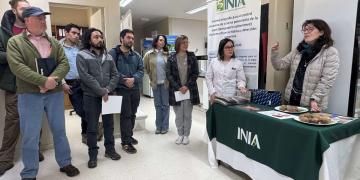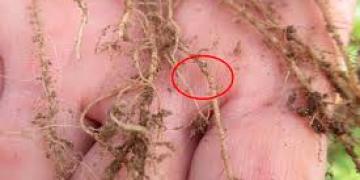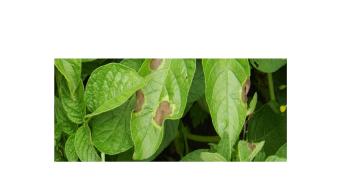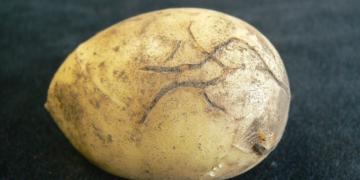Francia: Control of wireworms in potato plants, towards more integrative strategies
Faced with the worsening damage caused by wireworm larvae, it is urgent to better understand these pests, as is rethinking control strategies on a rotation scale.

The Taupic collaborative project, launched at the end of 2020 and whose closing meeting took place in June, brought together a broad partnership to improve knowledge on the biology and ecology of wireworms, to better assess risk factors and to seek new levers for the protection of potato crops (see LPTF No. 642 p. 46-47). Supported by the Ministry of Agriculture as part of the Casdar Technological Research call for projects, Taupic has produced significant results , but these need to be consolidated, by highlighting the need to develop more integrative protection strategies to prevent and control damage caused by wireworm larvae.
Multiple risk factors
In order to assess the risk factors for wireworm infestation and attack, 359 plot surveys were carried out to collect associated data on potato damage , infestation levels, cultivation routes and characteristics of plots and their pedoclimatic environment. The large dataset acquired shows significant disparities in attack levels depending on the region and year (Figure 1). The analyses, integrating around forty explanatory variables, highlighted multifactorial risks associated with damage , including, among the most significant, soil pH, the presence of Agriotes in the plot, the organic matter content, the number of limings in the rotation, the number of ploughings and the meteorology (precipitation) of the previous year. The results provide explanatory elements on the damage situations, but without predictive character of the OAD type. This requires continuing the investigation work over several years, in particular to better understand the impact of crop rotation and climatic conditions on the damage.
Around ten pilot sites were also set up for three years, with in-depth monitoring during potato cultivation (from planting to harvest) in diverse situations (weather, larval abundance, damage, species). On the 18 significantly infested sites, a relationship between larval abundance and damage was observed, but at a very variable level. This study provided interesting data on the conditions favorable to the presence and attacks of larvae. Significant variations in larval populations were observed during cultivation, particularly around top dressing and according to soil temperatures and humidity. The variables most significantly associated with damage were the duration of cultivation (between planting and harvest), top dressing, larval abundance or soil humidity. Extending this work with other references would be interesting, by expanding the monitoring over a complete rotation to understand the development of Agriotes under different crops (see box).
A DNA Barcoding tool was also developed for the rapid and accurate identification of wireworm species. Used on more than 300 samples from the project, it allowed us to characterize a wide diversity of wireworm species in plots. The harmfulness of the new taxa identified remains to be clarified.
Study of new protection levers
A large network of field trials allowed protection solutions to be evaluated in a variety of situations. Over 30 methods were tested during the project on three to four experimental sites per year, with the support of partners. Many biocontrol solutions were studied, alone or in combination, including entomopathogenic fungi and nematodes (CEP and NEP), natural substances, plant extracts, baits or companion plants. The level of damage in the controls varied greatly, between 5 and 92% of tubers with wireworm galleries. The solutions tested had limited effectiveness on average in situations of heavy attack, varying between 0% and 45%, below conventional references. Avenues have been identified and need to be explored further to improve protection levels . These include the application of CEP and NEP over several years and in association with cover crops, the choice of strains that better target the period and the target species of wireworms, the direct use of bacteria isolated from NEP or their encapsulation in order to facilitate their ingestion by wireworms or the use of baits or companion plants in attraction and protection strategies.
The project also provided an opportunity to develop studies under controlled conditions at the Achicourt site (62). The establishment of farms and a screening system enabled the evaluation of biocontrol solutions and the identification of differences in effectiveness depending on the stage of the wireworms (adults, larvae, nymphs, etc.). A preference for laying eggs by adults was also observed depending on the crop (particularly on cereals) as well as the effect of crops and plant cover on the development and mortality of young Agriotes larvae, with wireworm development varying depending on the crop (faster on wheat and ryegrass) (see LPTF No. 651).
The behavior of potato varieties was studied through field trials and controlled studies on varietal preference and palatability and the search for associated compounds. The Spunta variety showed greater attractiveness than Monalisa and Charlotte, but Monalisa proved more favorable to wireworms in terms of food intake, larval development and gallery size. Analysis of odor profiles on three varieties allowed the isolation of 65 volatile organic compounds (VOCs) with an effect of the physiological stage of the tuber, but without significant varietal effect. The role of other signals influencing the choice (CO 2 emission , biochemical compounds) is probable. Preliminary results indicate that the most affected varieties have rather low levels of glycoalkaloids and high levels of reducing sugars.
Developing integrated protection strategies
The results obtained highlight the need to develop risk forecasting tools, to combine partial-effect management levers, and the interest in reasoning the fight on the scale of the rotation. The survey carried out on existing cropping systems among plant producers and the reflection started within the network on the design of innovative cropping systems must be extended to arrive at new integrated crop protection strategies.
Zoom: Taupifast, a new project
The Taupic project has shown that focusing on sensitive crops is not enough to manage wireworms, and that protection strategies must be designed at the level of the rotation and the cropping system, in relation to the multi-year life cycle of wireworms. The knowledge and know-how acquired will thus be enhanced and supplemented within the framework of a new collaborative project called Taupifast, submitted within the framework of the Parsada plan (plan for anticipating the withdrawal of active substances and development of alternative techniques) and the beetle action plan for the seed and plant sector.The objectives of Taupifast are, thanks to a partnership extended to other sectors (potatoes, corn, carrots, melons, fresh vegetables, etc.), to better identify the vulnerable stages of wireworms; to identify risk factors before planting sensitive crops; and to implement multi-year approaches in rotation through targeted interventions with adapted control methods (soil work, cover crops, biocontrol solutions) deployed in the field.Fuente: terre-net.fr




